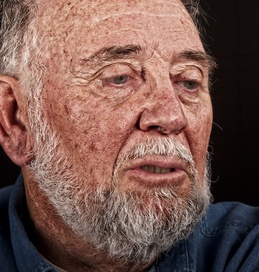
Age spots on the skin may look unsightly or even resemble melanoma (skin cancer), but they are medically harmless. Of course, if you have a spot on your skin that you’re concerned about, you should see your doctor or a dermatologist to make sure it’s not something more serious than an age spot. We’ll tell you what age spots are, though, what causes them, how to prevent them, and what you can do if you have some and don’t like them.
What Causes Age Spots on Skin?
Despite what the name might lead you to think, age spots are not caused by the aging process. You are more likely to get them as you grow older, which is why they are often called age spots, but you can get them at any age.
Age spots are actually caused by exposure to sunlight, or more precisely, the ultraviolet rays in sunlight. Exposure to ultraviolet rays in tanning beds can have the same effect. Your body produces a pigment called melanin that causes the epidermis, or top layer of skin, to turn darker, or get tan, in order to protect the deeper layers of the skin from the harmful effects of ultraviolet rays. Well, prolonged or very frequent exposure to ultraviolet rays can cause your body to produce very concentrated amounts of melanin, which can cause the small brown or black spots known as age spots.
What are Liver Spots?
Age spots are sometimes referred to as liver spots, but as we explained above, they are caused by exposure to the sun or other sources of ultraviolet rays, not by any kind of liver problem. The spots have nothing at all to do with your liver. Perhaps they are sometimes referred to as liver spots because of their characteristic brown color, similar to the color of the liver.
Preventing Age Spots on Skin

The best way to prevent age spots is to avoid prolonged exposure to the sun. Use sunscreen with an SPF (sun protection factor) of at least 15 when you’re going to be outdoors in the sun for any length of time (more than about 20 minutes), as recommended by the Skin Cancer Foundation(1). Use sunscreen even in winter and even on cloudy days, because some ultraviolet rays still get through. While people with fair skin are more prone to getting age spots, even those with dark skin should use sunscreen. Not only will this help to prevent age spots, but it will also help to prevent skin cancer.
Avoid tanning beds, as well, or if you choose to use them, do so only in moderation. We recommend talking to your doctor or a dermatologist about how often and for how long you can safely use a tanning bed, and following his or her recommendations. Be aware that both the World Health Association and the Food and Drug Administration of the U.S. consider tanning beds to be potentially dangerous, especially for young people.
Treating Age Spots
Age spots don’t need any treatment. They don’t cause any health problems. However, many people prefer to treat them because they don’t like the way the spots look, especially if they appear in highly visible areas like the face or hands. Unfortunately, those areas are where the spots are most likely to appear because those are the areas that typically get the most exposure to the sun.
Dermatologists and cosmetic surgeons often remove age spots with treatments like chemical peels (chemicals are applied to the affected area, which burns off the top layer of skin), dermabrasion (the top layer of skin is essentially sanded off), and laser resurfacing (polishing away the top layer of skin). These treatments all work but, as you might imagine, they can cause some discomfort. There is a risk of complications, like infection or scarring. These procedures are also expensive and usually not covered by health insurance policies since they are considered cosmetic and not medically necessary.
If you’re interested in alternatives to things like chemical peels and dermabrasion, you should know that not all products marketed for the treatment of age spots are effective. Fortunately, though, some are. We’ll tell you about our favorite.
Recommended Treatment for Age Spots on Skin
To treat age spots on the skin, we recommend H-Age Spots Formula. Made from natural homeopathic remedies and essential plant oils, it evens skin tone gently, making age spots fade away. It’s affordable and available without a prescription. For more information about our preferred treatment for age spots, just follow the link.
(1)Skin Cancer Foundation: Sunscreens
